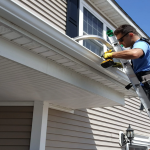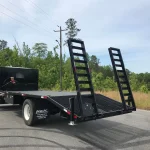Bunions are a common foot condition that can cause discomfort, limit mobility, and make it hard to stay active. While surgery is sometimes necessary, many people find significant relief with non-surgical treatments—especially custom orthotics.
If you’re looking for ways to manage bunion pain naturally, custom orthotics could be a simple solution that fits right into your everyday life. Here’s what you need to know about how they work and why they’re so effective.
What Are Bunions and Why Do They Hurt?
A bunion develops when the big toe drifts toward the smaller toes, causing the joint at the base to stick out. Over time, this misalignment can create:
- Swelling and redness around the joint
- Pain while walking or standing
- Difficulty finding shoes that fit comfortably
- Stiffness or reduced range of motion
Bunions often progress gradually, especially if you spend a lot of time on your feet or wear tight, narrow shoes.
What Are Custom Orthotics?
Custom orthotics are medical-grade shoe inserts made specifically for the shape of your foot. Unlike store-bought insoles, custom orthotics are molded based on an evaluation of your gait, arch, and unique needs.
Podiatrists design orthotics to:
- Redistribute pressure across your foot
- Improve alignment of the big toe joint
- Provide targeted cushioning and support
- Help prevent the bunion from worsening
When used consistently, custom orthotics can make walking more comfortable and reduce daily pain.
How Do Custom Orthotics Help Bunions?
Bunions develop partly because of uneven pressure and instability in the foot. Over time, this imbalance pushes the big toe out of place. Custom orthotics address these problems at their source.
Here are some of the ways orthotics support bunion care:
Redistributing Weight
By spreading your weight evenly, orthotics relieve stress on the bunion joint. Less pressure means less irritation and inflammation over time.
Improving Alignment
Custom inserts can gently guide your foot into a better position, preventing your big toe from drifting further.
Reducing Friction and Pressure
Extra cushioning protects the bunion from rubbing against your shoes, which often causes painful calluses or blisters.
Supporting Arches and Joints
Orthotics improve stability throughout your foot, reducing strain on other joints that can become stressed when you change your gait to avoid bunion pain.
Who Can Benefit From Custom Orthotics?
Custom orthotics are a good option for many people, including:
- Active adults and athletes who want to stay mobile
- Individuals who spend long hours standing
- Seniors looking to maintain comfort and independence
- People hoping to delay or avoid bunion surgery
If you have diabetes or circulation problems, orthotics can also help prevent additional complications by improving foot support.
What to Expect When Getting Custom Orthotics
Getting orthotics starts with a thorough evaluation by a podiatrist. Your appointment may include:
- A discussion of your symptoms and daily activities
- A physical exam of your feet and ankles
- Gait analysis to see how you walk and distribute weight
- Imaging, like X-rays, if needed
After this assessment, your podiatrist will create molds or 3D scans of your feet to design the inserts.
Once your orthotics are ready, you’ll try them on and make adjustments to ensure a comfortable fit. Over time, follow-up appointments help fine-tune the inserts and monitor progress.
To learn more about what to expect, visit this bunion treatment guide for additional information.
Tips for Getting the Most From Your Orthotics
Custom orthotics can make a big difference, but consistency matters. Here are a few tips to maximize their benefits:
- Wear them daily: Use your orthotics whenever you’re on your feet.
- Break them in gradually: Start with short periods and increase over time.
- Check your shoes: Make sure your footwear has enough room to accommodate the inserts.
- Stay active: Gentle movement helps keep joints flexible.
- Follow up with your podiatrist: Regular visits ensure your orthotics continue to fit and support you well.
These simple steps help ensure you get the most comfort and support possible.
Other Non-Surgical Treatments to Combine With Orthotics
Custom orthotics work best when paired with other conservative treatments. Depending on your needs, your podiatrist may also recommend:
- Protective pads to cushion the bunion
- Night splints to improve alignment while you sleep
- Targeted stretching and strengthening exercises
- Footwear modifications to reduce pressure
Together, these strategies can help you stay active and avoid more invasive options.
When to Consider Other Treatments
While custom orthotics are effective for many people, there are times when additional care may be necessary. You may need further treatment if:
- Pain persists despite consistent use of orthotics
- The bunion continues to grow or deform the foot
- Daily activities become difficult or limited
Your podiatrist can discuss surgical options or more advanced therapies if needed.
Custom orthotics are a powerful tool in managing bunion pain and preserving your active lifestyle. By redistributing pressure, improving alignment, and protecting your joints, these inserts can help you move comfortably without relying on surgery.
If you’re considering orthotics for bunion relief, don’t wait. Talk to a podiatrist about a personalized plan that fits your feet and your goals.
Explore more about bunion treatment options at this bunion treatment guide for helpful insights and next steps.





